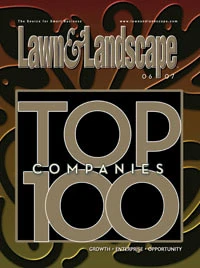The customer on the other end of the phone is frantic, and the crew at her home is uncertain how to proceed.
“Please! I need to tell your crew not to trim the bushes on the side of my yard – they actually belong to my neighbors. Your crew can’t understand what I am trying to say!”
In the past, such phone calls were something I dealt with during a typical week as office manager at Garrick-Santo Landscape Co. in Malden, Mass.
Not only are customers becoming more frustrated with the language barrier, but our workers are concerned as well. As the industry’s workforce has become increasingly Hispanic, this is a frequent problem and concern with many landscape companies nationwide.
My job is to keep the office running smoothly and these types of calls are counterproductive to that goal. Not only did office productivity slip while one or more of us were placating the unhappy and frustrated client, but job efficiencies fell as crewmembers, attempting to figure out what the customer wanted, halted production.
In the past, the crew may have left the job unfinished, for fear of doing something wrong. Likewise, the customer is left less than pleased by our performance. Our crews take a lot of pride in their work, and it is upsetting to see a customer come racing out of the house, trying to tell them something that is obviously of an urgent nature, yet not being able to understand, communicate with or help the client.
Communicating the best we could with the crew when they came back to the shop, trying to explain what the customer wanted and then sending the crew back out to the job the following day was not an uncommon practice. Despite the cost, Garrick-Santo Landscape is committed to customer satisfaction, but it certainly was not an efficient or economical solution.
We needed to develop a way to ensure our customers could communicate their concerns to the crew.
Fortunately, Richard Gottschalk, president of Garrick-Santo Landscape Co., is always open to new ideas. During one of our staff meetings I suggested trying out a business card that the crew leader could hand to the client, indicating that translation was available immediately over the crew leader’s two-way radio.
Gottschalk gave the go ahead, and Sybil Velez, who joined our management team a year ago as assistant manager and is bilingual in English and Spanish, was enthusiastic about the idea. Sybil speaks directly with customers and gathers their concerns and then relays the information at that moment to the on-site crew, resolving the situation. Done. No upset client and no need to send the crew back. The company saves time and money, and most importantly, the customer receives a greater level of service.
Our costs to implement this idea were minimal. Sybil and I discussed various formats for the business card, we went back and forth with our printing service a few times, and have a template that we can update as needed.
The total cost to print 500 cards was about $65. Obviously the cost to add another person to the payroll would have to be considered, should a company not have a bilingual person in their employ. In our case, having such a person in the office, centrally located and easily accessible has proven to be the best solution.
The end result is a business card, held by all Hispanic crew leaders on every job. The card reads:
“Hello, my name is ____, although I do speak some English, I want to make sure that I am servicing your property to your satisfaction. I am able to contact a translator to help us communicate better, if you would like. Thank you!”
On the reverse, instructions are printed in Spanish for the crew leader, outlining the proper use of the language card.
To implement our new service, we held a crew meeting, during which we introduced the cards, along with an explanation of how and when to use them. We instructed our Hispanic crew leaders to hand the card to any customer who met them on the property, even if there didn’t seem to be a problem. In that way, our customers would be aware that should a concern ever arise, there is a solution at hand. Also, an announcement regarding the card will be sent to our clients with their annual renewal notices, to further ensure that everyone involved is aware of the benefit the card will provide.
We began to utilize this service in September and the initial results have been very positive. Clients and crewmembers alike have expressed relief in not having to worry about how to communicate with each other now or in the future.
We expect this one innovation, while seemingly small, will pave the way for additional ideas and mutual growth as our two cultures continue to work closely together.
The author is office manager at Garrick-Santo Landscape Co., Malden, Mass. She can be reached at 781/322-0006 or dverolla@garrick-santo.com.

Explore the June 2007 Issue
Check out more from this issue and find your next story to read.
Latest from Lawn & Landscape
- ExperiGreen, Turf Masters Brands merge
- EquipmentShare cuts ribbon on new Maryland branch
- Strathmore acquires Royal Tree Service in Montreal
- In a new direction
- The December issue is now live
- Ignite Attachments debuts 80-inch, severe-duty bucket
- EquipmentShare breaks ground on Roswell branch
- NaturaLawn of America adds Schwartz, Medd to operations team





